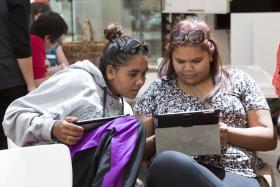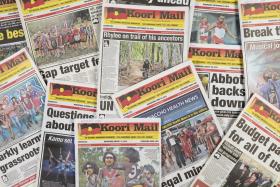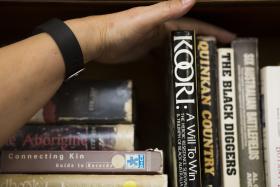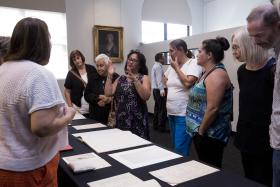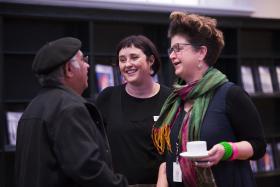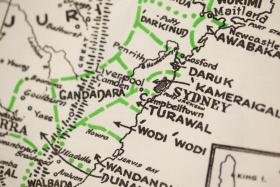
Include and support Indigenous employment
Indigenous Spaces In Library Places Public Library Toolkit
Develop strategies to include and support Indigenous Australian employment across the public library network
Targets
- Increased number of Indigenous Australian staff, including librarians and archivists employed by public libraries.
- Increased awareness of career pathways for Indigenous Australian peoples to be employed in the Library and Information profession through the public library network.
Key strategies
- Advocate for government agencies and/or councils to develop Indigenous employment strategies.
- Encourage and promote the development of volunteer and/or other work experience or placement opportunities for Indigenous Australian students in public libraries.
- Provide mentoring and professional networking for Indigenous staff across NSW public libraries, including sharing information on development opportunities and new career pathways.
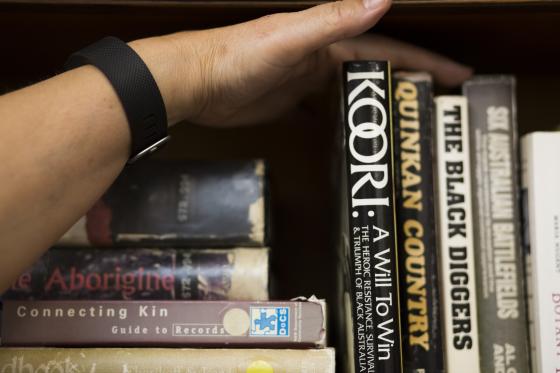
Resources for public libraries
Getting started
Have you made connections with your local high schools regarding work experience programs? You might be interested in discussing whether your library can support an Aboriginal or Torres Strait Islander person in a work experience program.
The Australian Broadcasting Commission (ABC) has some useful information about the ways in which they build priorities around work experience and training for Aboriginal and Torres Strait Islander peoples. They describe their commitment as follows:
"The ABC encourages Indigenous people to apply for work experience in all states and territories of Australia. The ABC's Reconciliation Action Plan and Equity and Diversity Plan have a range of strategies aimed at providing employment opportunities for Aboriginal and Torres Strait Islander students and jobseekers. This initiative also reflects the provisions of the Equal Employment Opportunity (Commonwealth Authorities) Act 1987. Work experience is one of the ways that Indigenous people can connect with their local ABC workplace while undertaking on-the-job training in an area of interest to their studies, qualifications and interests."
You could utilise the ABC model to build cadetships traineeship opportunities at your local library. More information on the ABC cadetship programs here.
Getting started
A traineeship could be another avenue for building pathways for Indigenous peoples to join the library profession, and work in your local library. Below are some resources to get you started:
- Aboriginal Affairs and priority areas of NSW Local Government
- Collaborate NSW: Local government and Aboriginal communities working together
- Additional downloadable resources to work with your community
Tip
Investigate if your local Council have an Aboriginal Employment plan, or a Reconciliation Action Plan that you could contribute to.
Working together
Your library can take an active role in working with your Council or library leadership team to build traineeship opportunities for Indigenous peoples. You could work on building an advocacy plan to identify places where an Indigenous traineeship could be a good fit in your library. The traineeship could be focussed on:
- General Library services or collection development activities
- Targeted services for Indigenous people and communites
- Planning for events or 'on-the-day' event delivery support
- Liaison between Council and the library on engagement programs .
Tip
It is a good idea to put time into planning how a traineeship might be built at your local library. Think about support mechanisms for the trainee. Questions that might come up include:
- What would the induction process look like – would the trainee meet other Indigenous people in the local government network?
- What training might be necessary?
- What additional mentoring or support might be available and appropriate?
Keep an eye out for conferences that take place that might be useful, including attending an annual NSW Local Government Aboriginal Network event.
Getting started
Your local library can assist Indigenous people from the local community to find job seeker resources. The Koori Mail Newspaper is a great resource for information on jobs and career pathways. You could display the fortnightly newspaper in your library as a resource, or promote access to their website
The notice on the Koori Mail website reads:
"The Koori Mail’s job advertisement pages are read by Aboriginal and Torres Strait Islander people Australia-wide".
Use the links above to view/download the employment pages from recent editions. For our latest edition, buy a copy of the Koori Mail at your nearest major newsagency.
Some other useful websites include:
Getting started
Library and Information Studies (LIS) students are often interested in placements with local public libraries. You may wish to consider scoping a project for a LIS student around the development of Indigenous services in your Library.
They could, for example:
- Undertake a review of your library in relation to the Indigenous Spaces in Library Places strategy. They could also make recommendations for an action plan to progress work in this area.
- Identify priority areas based on the Aboriginal and Torres Strait Islander Library information Resource Network (ATSILIRN) Protocols for Libraries, Archives & Information Services.
Getting started
In its Aboriginal and Torres Strait Islander Employment Strategy, the Commonwealth Government outlines the importance of increasing the representation of Indigenous peoples in the Australian workforce. The Strategy focusses on four key action areas:
- Expand the range of Indigenous employment opportunities
- Invest in developing the capability of Indigenous employees
- Increase the representation of Indigenous employees in senior roles
- Improve the awareness of Indigenous culture in the workplace.
These action areas could be applied to a public library context as guiding principles in the development of an Identified role.
The Commonwealth Government's Strategy also defines an Identified role as such:
"An 'identified position' is a vacancy with specific selection criteria/job requirements that signify that the role has a strong involvement in issues relating to Aboriginal and/or Torres Strait Islander people. Typically, these roles will involve the development of policies or programs targeted at Aboriginal and/or Torres Strait Islander peoples, or which involve direct interaction with Aboriginal and/or Torres Strait Islander communities".
In addition to greater representation across the library sector, the creation of an Identified role at your library presents an opportunity for enriching understanding of your Indigenous collections and their effective management, as well as building stronger relationships with your local Indigenous community.
Working together
The State Library of Queensland and the National Library of Australia have each developed unique Aboriginal and Torres Strait Islander Employment Strategies you may find useful for further information and ideas:
Case Studies
This case studies has been kindly provided by Lakkari Pitt, after undertaking a work experience with the Indigenous Services team at the Library.
My name is Lakkari Pitt and I am a proud Gamilaroi/Ularoi woman from Walgett in the north-west of New South Wales. I am in my third and final year at the University of Newcastle, studying the Bachelor of Aboriginal Professional Practice.
I approached the State Library of New South Wales to complete a six-week Professional Placement with the Indigenous Services Branch for my University degree. My placement ran from late March to early May of 2017.
I have a strong interest in the history of Aboriginal and Torres Strait Islander people’s culture, struggles and also our plight for social justice. I thought that completing a placement with the Indigenous Services Branch, would be so beneficial to my degree and also to the personal interests I have for my people.
My overall experience working at the State Library was so rewarding and satisfying. I believe I have experienced an environment which is so extremely supportive and encouraging. This has undoubtedly given me a positive insight into this industry. The relationships I have built from the short time I had spent with Indigenous Services are ones that I will forever cherish.
During my time at the State Library, I worked on many exciting projects. Some of these were at the near end of completion and the others just in the initial stages of planning. I had the opportunity to complete a Case Study as a part of my placement, the Case Study was self-determined by my supervisor, Kirsten Thorpe and I. We had both decided on the question: “How to make the State Library of New South Wales a more culturally inviting, welcoming and engaging place for Aboriginal and Torres Strait Islander people?”.
I think that this was such a great topic of discussion, it was so interesting to analyse and evaluate. I personally feel that all organisations and institutions should be having this conversation.
I would one-hundred percent recommend Indigenous Services to anyone who is considering undertaking an internship or placement in this field. My placement has enlightened my educational, personal and professional learning experiences. This was an opportunity that I will be forever grateful for.
Choose your strategy objective
Other resources for your library
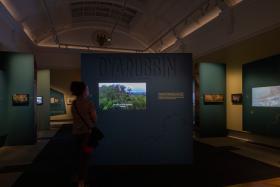
Indigenous Spaces in Libraries
Building culturally safe and welcoming spaces in libraries for First Nations peoples and communities.
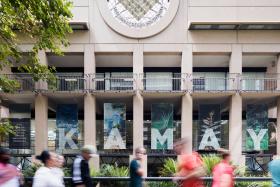
Guiding Principles and Indigenous Frameworks
Guidelines the Library follows for engaging with Aboriginal and Torres Strait Islander people and managing the collections

